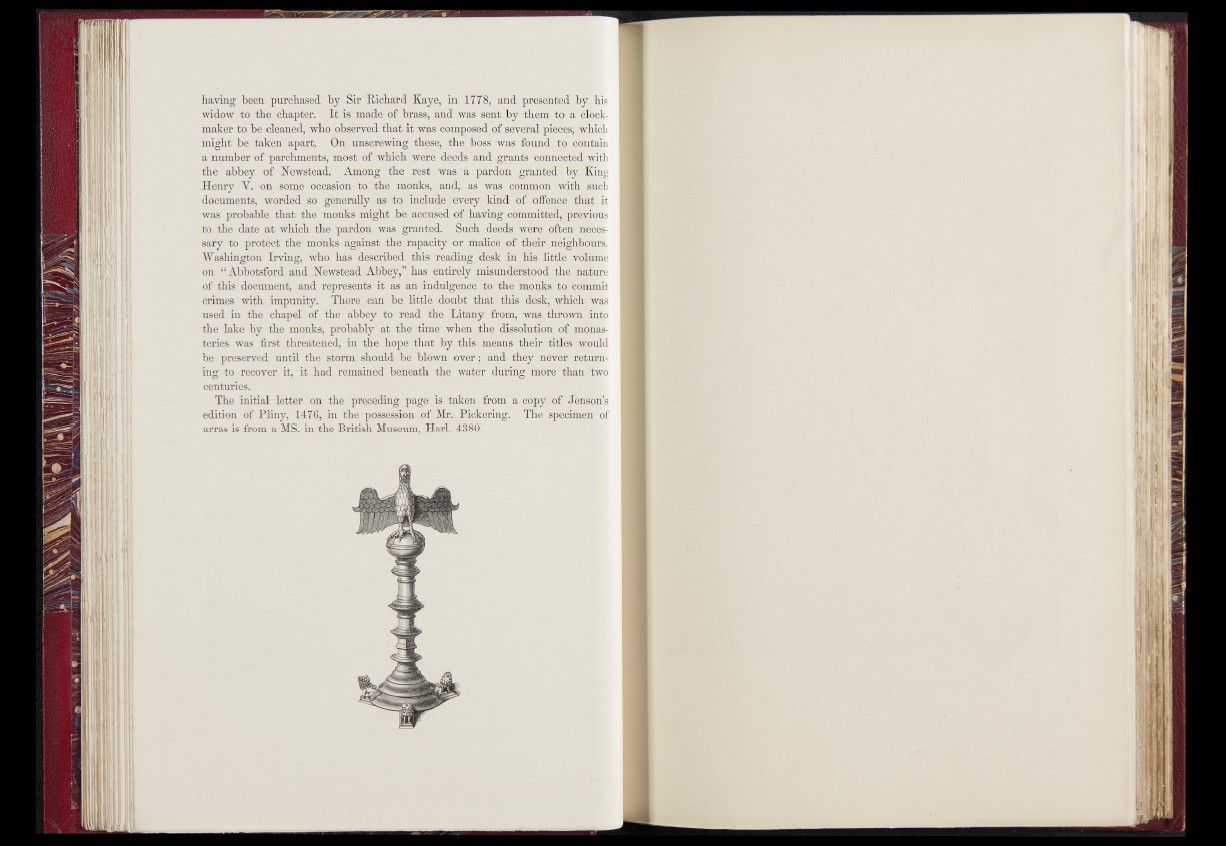
having been purchased by Sir Richard Kaye, in 17 TB, and pje'serited'bymis
widow to the- chapter. It is made of brass, and was sent by/them to a clock-
maker to be cleaned, who observed that it was composed of several pieces,Sjjvhich
might be taken apart. On- unscrewing these, the jD°ss was found' to/cfontaiii
a number of parchments, 'mpst^ of which were deeds and.^ahti^bnnected/witli
the abbey of Newstead. - Among tthe test was a pardon grtoted'i'bj^King
Henry V. on some occasion - to -the monks, and, as was common with -such
documents, worded^ so generally as to include every kind of offence that it
was probable that the monks might be accused of having committed^.pifeyious
to the date at which the. pardon was granted. Such deeds w,ere oftep^imces-
sary to protect the monks against-the rapacity or malice of-thfeif’n^n'TOjiri.
Washington Irving, who has described this reading desk in his JittlJ^y^Kune
on ,<£ Abbotsford and Newstead Abbey,” has entirely misunderstood the nature
of this-document, and represents it as an indulgence to the mdnks to commit
crimes with -impunity. There can be little doubt that this- desk^^hicl^Sas
used in the chapel of the abbey read the Litany from, wast,fhrovp|®to
ttfr lake by the monks, .probably-at the tune when the fdi^lutim^ji^parias-
teries was first threatened, in the hope-that b ^ th ii means theirl^itles^ould
be. preserved until the storm should- be bl^wn_over; -and they never returning
to recover it, it had remained beneath the water * during more than two
centuries.
The initial-letter on the preceding page- is" taken»,froui'a^copy of1 Jenson’^
edition of Pliny, 1476, in the possession of Mr. Pickeriug.y.^TBe .specimen’ 'of
arras is from a MS. in the British Museum, Harl. 4380. / '